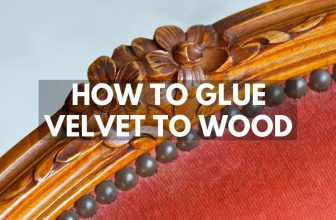How to glue metal to metal
To bond metal to metal without welding or soldering, you need a seriously strong adhesive. In this guide, we show you step by step how to glue metal to metal and which glue to use.
When you need to fix two pieces of metal together using glue there are 3 general types to choose from. Two-part epoxy resins are the most widely recommended followed by Polyurethane and Superglue. Deciding which type of glue to use will depend on what you intend to use it for but for metal to metal, you want one of these top 3 metal glues.
What glue for metal to metal?
Epoxy Resin is the preferred adhesive for most metal joints although Polyurethane glue and Cyanoacrylate both have their benefits. To help you choose which glue is right for your job we will explain the different types and what they can be used for.
- Epoxy Resin is a two-part adhesive that is mixed before using and creates one of the strongest bonds of any metal glue.
- Polyurethane
- Cyanoacrylate
Step-by-step guide to joining metal using glue
When using any kind of strong adhesive, especially metal glues, preparation, and planning are key to being successful. You need a clear workspace and a clean metal surface before even opening your glue.
This doesn’t sound too difficult but once you’ve started, there’s no going back and one wrong move can see everything go wrong in an instant. This step-by-step guide to gluing metal should minimize the risk of making a mistake and increase your chances of doing a clean job.
Step 1: Safety Precautions
Whenever you are working with potentially dangerous substances you should always follow safety instructions.
- Your workspace should be well ventilated to avoid breathing in harmful vapor particles.
- Protective eye goggles are recommended to avoid accidentally touching your eyes.
- Tie your hair back if needed and remove any jewelry.
- Wear protective clothing where necessary.
- Wear nitrile gloves to avoid getting glue on your hands and skin irritation.
If you do get any adhesive in your eyes, nose, or mouth you should rinse them with warm water for several minutes and consult a doctor or hospital immediately. If you get glue on your skin then acetone can be used to remove it as long as it is rinsed off thoroughly afterward.
Step 2: Prepare your Workspace
The first step is to prepare your workspace to make sure it is free of dust and debris. If you are working in the garage or the house, vacuum the area and clear space without any clutter. Put some newspaper down to protect any surfaces and set all your tools out within arms reach. Make sure you have good light on the area you are working with and you are ready to go.
Step 3: Prepare Metal Surfaces
Before you apply any glue to the metal you must make sure the surfaces are clean and free of oil, grease, rust, dirt, dust, and previous sealant or adhesive residues. For particularly dirty or corroded surfaces this may take a lot of time but is necessary to get a good bond.
First, wipe any oil, grease, and dirt off the surfaces with an old cloth or paper towels to get a better look at the condition of the metal. After assessing the surface you can take appropriate actions with sandpaper, wire wool, or soapy water to remove any rust or dust. Don’t be shy when removing rust, you want to completely remove the corroded layer to get to the good stuff underneath.
Once the area is totally free of rust and debris, you should leave the surface roughened using a file or grinder to improve the adhesive bonding properties. Before finishing this step you should give the area one last clean with a damp cloth and then let it dry.
Step 4: Apply Metal Glue
Depending on which type of glue you are using and what the manufacturer’s instructions recommend, you can apply the glue straight from the nozzle or by using an applicator. Some jobs might require a thin, even layer covering every inch of the surface while others will work better if used in blobs at strategic points.
You may need to apply the glue on one or both of the joining surfaces, depending on the glue and surface materials. You may also have to wait until the glue becomes tacky before joining the pieces together and wipe away any excess glue that squeezes out before it dries.
Applying an equal coverage of glue in the right quantity is a skill in itself and can make a dramatic difference in the overall hold strength.
Step 5: Secure Metal During and After Gluing
Unless you have the luxury of being able to leave the metal in position while it dries using only gravity, you will generally have to apply some pressure to the glue joint until it sets. Once it is set you still need to leave the glue to properly cure but will no longer need to apply any pressure.
Clamps are the most convenient tool to secure metal in position while the glue dries. They can be adjusted to apply pressure where needed and are easy to use. The next best thing is simply leaning something heavy against the joint at the correct angle to make a solid connection. You can also use two heavy objects like bookends to squeeze and hold two surfaces together.
Step 6: Remove Excess Glue
The best way to keep your glue job looking tidy is to clean it up with a rag as you work and before it sets. You can remove any excess adhesive with acetone which softens set glue so that you can scrape, brush, or wash it off. The problem with this is that if you aren’t accurate with your acetone application you can end up weakening the entire bond.







